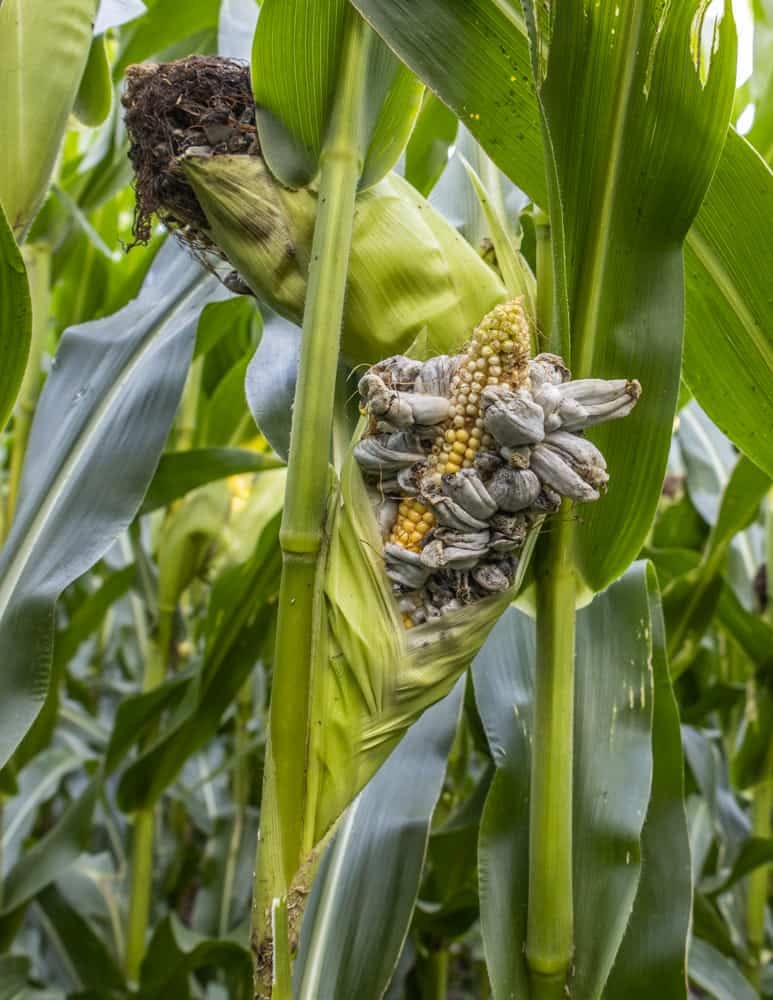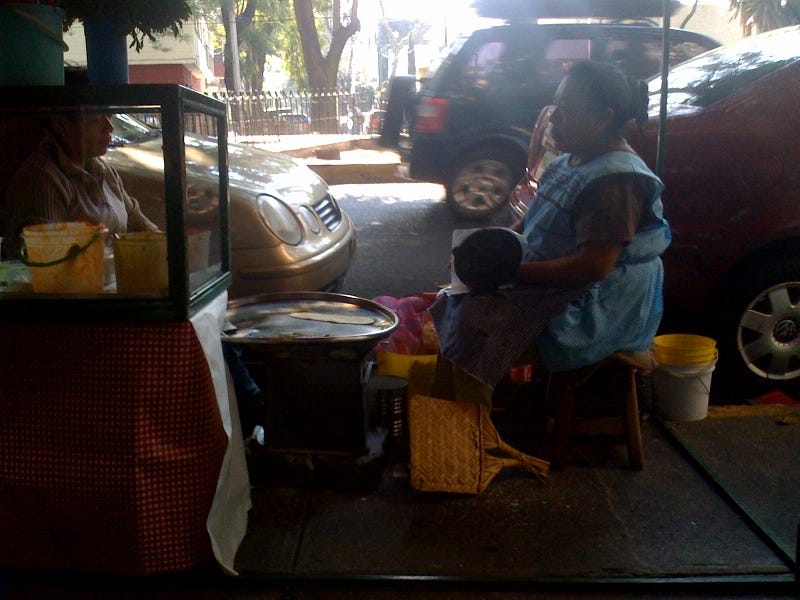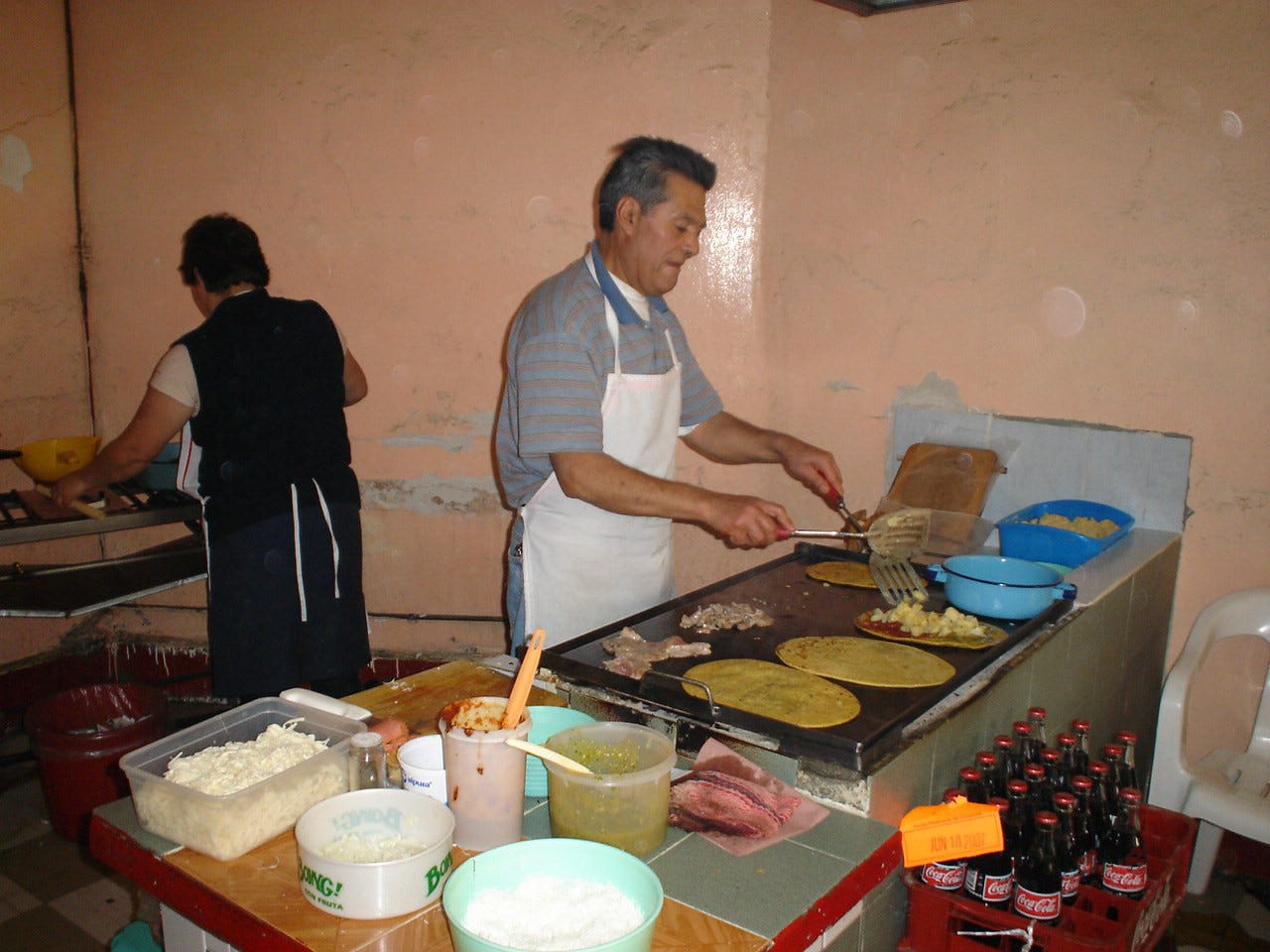Hello friends! Welcome to the “Tortilla Stack,” a series of essays about the wonderful world of Mexican Cuisine. Join me, a self-proclaimed taconnoisseur, on a tour that will feed your curiosity and most likely make you drool. The previous episode of the Tortilla Stack, “The Best Taco (in my opinion),” can be found here. I hope you enjoy it!
Warning: Reading the following piece may induce hunger.
The phrase “What grows together goes together” is usually used when pairing food and wine. For example, in Burgundy, France, they had beef and wine, and someone thought it would be a good idea to use the local wine to make a beef stew, et voila! Beef Bourguignon was born. If you live in a major city, you can probably eat food from different parts of the world, and eating locally has changed in meaning.
Now think of this: About 9,000 years ago, someone in southern Mexico figured out how to domesticate grass, teosinte specifically, and turn it into what we now know as corn. Corn became the staple crop of Mesoamerica, feeding the rich and the poor, the noble and the commoner.
In Colhuacan, central Mexico, people started building garden beds on the shallow parts of the lake. They would drive stakes into the bottom of the lake, create a rectangle with wattle, and fill it with organic matter, dead trees, mud, and dirt until a layer of soil was slightly above the surface. These floating gardens, called chinampas, were the technological advancement the Aztecs perfected to grow their imperial expansion. These well-watered beds did not depend on rain, so they had very high crop yields, up to seven harvests a year.
The milpa, a traditional Mesoamerican crop-growing system, was a harmonious combination of corn, beans, and squash. This intercropping method not only maximized the use of the chinampas but also enhanced the nutritional value of the crops, as they complemented each other's growth and soil needs.
Some say Mexican food is tortillas, beans, meat, and cheese. And to some extent, they would be right. But even though the ingredients may be the same, Mexicans have been very creative with simple ingredients to create dishes that can make anyone’s mouth water. After all, what grows together goes together.
Elote
Elote comes from the Nahuatl “elotitutl,” which means tender cob. Mexicans say “elote” when talking about corn on the cob and “maiz” when referring to the kind of tortillas they want, as in “tortillas de maiz.”
Growing up in Mexico, seeing “eloteros” making their rounds through the neighborhoods selling corn on the cob was the norm. These industrious men would have a pot full of boiled corn, sometimes with a small hearth underneath to keep the product warm, or even grill corn on demand. You’d usually see them in a cargo tricycle where they would fit all their wares.
You could get a whole ear of corn or my favorite, “elote en vaso,” corn in a cup, or as they’re also known in the southern parts of Mexico, “esquites.” The usual toppings included crema (room-temperature dairy, yum), mayonnaise, crumbly cheese (more room-temperature dairy), lime, nacho cheese, and chili powder. To me, this is the perfect mid-afternoon snack.
Cuitlacoche
Cuitlacoche is corn smut, a fungus that infects corn ears, turning the kernels into inky-black bulbous growths that are safe to eat and considered a delicacy in Mexico. It has an earthy, smoky, sweet, savory, woody, and mushroom-like taste, and it is usually served in quesadillas (with or without cheese).
Masa
Nixtamalization is boiling corn kernels in water and quicklime (calcium hydroxide) to unlock the corn’s nutrients and make the kernels softer. When you grind the kernels into a homogenous paste, it becomes masa—and you can do many things with masa. “Antojitos,” which translates to little cravings, is a food category for street food consisting of small plates with corn masa as the main ingredient.
What do sopes, tlacoyos, huaraches, and panuchos have in common? They’re all made from masa and have refried beans in their list of ingredients. Then, what’s the difference?
Sopes are masa disks about half an inch thick that are par-cooked on a skillet. Once both sides have firmed up and the inside is still soft, the edges are pinched to “raise the walls” of the sope. This maneuver creates space for the toppings, but before we add toppings, the pinched-edge disk is deep-fried until golden.
You can get as creative as you want with your toppings, but your standard sope usually consists of refried beans with a sprinkle of cotija cheese, shredded iceberg lettuce, and cubed tomato. If you add anything else, add the topping name at the end of “sope de,” i.e., a chicken sope becomes a sope de pollo.
If you don’t pinch the edges of the par-cooked masa disk, it becomes a gordita. Skillful Mexican women who no longer can feel the heat on their fingertips create a slit in the gordita to create something that resembles a clamshell. You can get creative with fillings, but nothing beats a gordita de chicharrón.
Pupusas and arepas are the Central and South American versions of gorditas.
A tlacoyo begins with a handful of masa (bonus if it’s blue corn masa) carefully made into a fat tortilla. A spoonful of refried lima or black beans is scooped and deposited in the middle. The edges are sealed, and the tlacoyo is shaped into a pointy oval. It hits the skillet until crispy on both sides and then gets topped with cheese, nopales, and salsa. Tlacoyos taste best if served outside a subway station in Mexico City.
Huaraches resemble the sole of a huarache sandal: an elongated oval-shaped masa cake is cooked on the skillet, smeared with refried beans, and topped with steak, minced pork chop, or a fried egg, cotija cheese, nopales, and salsa. There’s a place in North Phoenix with huaraches on its menu, and I always order the red salsa chicharron as a topping. When you order it to go, they give it to you in a pizza box, which I think is hilarious. They also make their huaraches into perfect circles, which I don’t mind.
Hailing from the Yucatan peninsula, the panucho is a refried tortilla that is stuffed with refried black beans and topped with chopped cabbage, pulled chicken or turkey, tomato, pickled red onion, avocado, and pickled jalapeño pepper.
As you can see, even though these dishes have two ingredients in common, their preparation, size, and toppings make them unique. Before moving to the US, I sampled many “antojitos” by visiting different places in Mexico. And that’s the beauty of regional cuisines: they all have something delicious to offer.
In the next episode of the Tortilla Stack, we’ll talk about everything about tortillas! If you liked this essay, share it with friends and family. Until then, stay hungry!
Peregrino is a reader-supported publication. To receive new posts and support my work, consider becoming a free or paid subscriber.
Before you go
Have you had any of these dishes?
Pinto or black beans?
If you’re not from the US or Mexico, is there something similar in your country’s cuisine?











We just had some excellent tacos last night! I'm here for these foodie pieces.
Oh my gosh, this whole post just brought me back to being a little girl in my bisabuela's cocina. She made gorditas all the time... Sweet ones that weren't greasy. They were perfect by themselves or with butter.
Thank you for writing this.
I'm learning more about the importance of corn for our ancestors while reading the book, "Guadalupe and the Flower World Prophecy." It's making me feel very proud. I have to say -- maybe this is the wrong place to get on a soapbox -- the only time I hear about the Aztec culture from Anglo Catholics is when I hear about how they were 'evil monsters who sacrificed people...' It's not hard to find somebody online shaming someone with indigenous Mexican ancestry for that reason. Thankfully, I was raised in San Antonio, so I received a more beautiful impression of my heritage. All to say, I appreciate when folks take the time to highlight what is beautiful and good about the Mexica people.